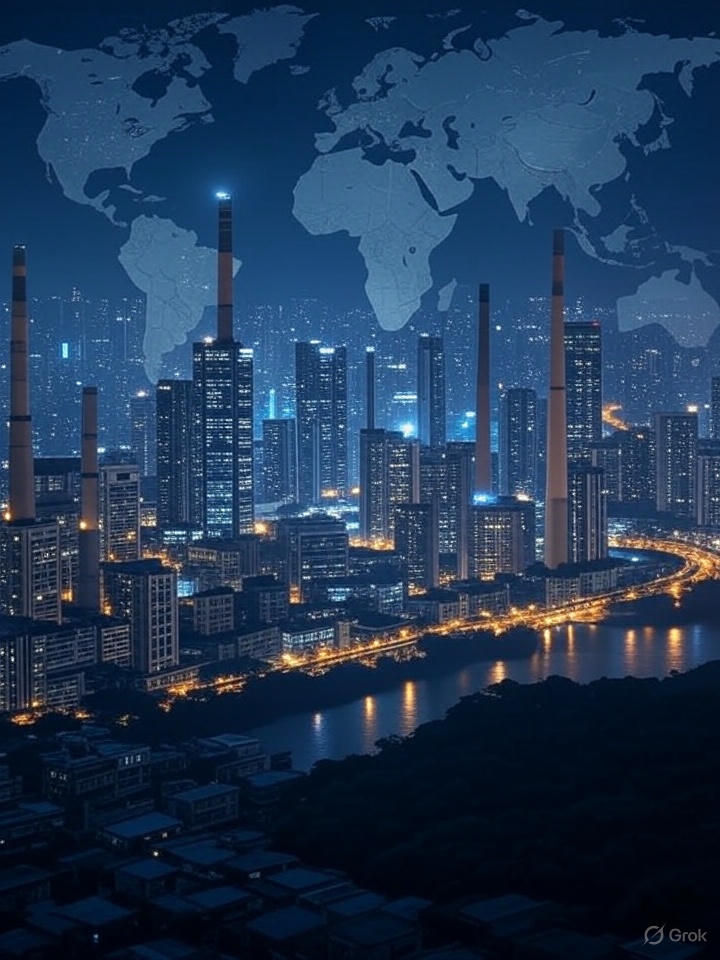Fractured Reality: The Hidden Patterns of Control and Resistance
- thebrink2028
- Apr 22
- 2 min read

Humanity has grappled with the dichotomy of technological advancement and the erosion of individual freedoms. From ancient stone circles to modern digital infrastructures, power structures have consistently sought to fragment and control the boundless nature of truth.
The Fragmentation of Infinite Truth
Imagine reality as an interconnected web, where every element—time, space, thought, and nature—is interwoven. Disrupting one thread threatens the integrity of the entire chain. Historically, dominant groups have attempted to dissect this holistic truth into manageable segments, asserting dominion over each fragment. By doing so, they not only claim ownership but also impose a limited perspective, obscuring the broader, interconnected reality.
Instruments of Control: From Megaliths to Microchips
Ancient Alignments: Megalithic structures, such as stone circles, were not merely architectural feats but also tools for astronomical observations. While they showcased human ingenuity, they also served as instruments to regulate agricultural cycles and, by extension, societal behaviors.
Religious Institutions: Temples and religious doctrines have historically been used to dictate moral codes and societal norms. While offering spiritual guidance, they also established hierarchies and controlled populations through prescribed rituals and beliefs.
Modern Technology: In today's digital age, platforms designed for connectivity often double as surveillance tools. Social media algorithms, for instance, can manipulate information flow, reinforcing echo chambers and influencing public opinion. Studies have shown that exposure to tailored content can significantly impact individual beliefs and behaviors.
The Psychological Underpinnings of Control
Scientific research indicates that humans have a cognitive bias towards patterns and narratives that align with their existing beliefs—a phenomenon known as confirmation bias. This predisposition makes individuals susceptible to controlled information streams, where repeated exposure to specific narratives reinforces acceptance, even in the face of contradictory evidence.
The Digital Panopticon
A digital platform, under the guise of promoting free speech, subtly censors dissenting voices. An undercover investigation revealed that certain ideological groups were systematically suppressed, while others were given prominence. This selective amplification and suppression not only skew public discourse but also shape societal norms and perceptions.
The Cycle of Resistance and Reclamation
History is replete with instances where suppressed truths eventually resurface, challenging established norms:
Scientific Revolutions: Galileo's heliocentric model, once deemed heretical, eventually redefined our understanding of the cosmos.
Civil Rights Movements: Grassroots movements have historically dismantled oppressive systems, from apartheid to segregation, highlighting the power of collective resistance.
Digital Activism: In the modern era, whistleblowers and digital activists expose concealed truths, leveraging technology to challenge dominant narratives.
In an age of information overload, how can individuals discern genuine truth from manipulated narratives?
What responsibilities do technological platforms have in ensuring unbiased information dissemination?
How can societies foster critical thinking to resist subtle forms of control?
Are we, as a global community, moving towards greater awareness and resistance, or deeper into controlled fragmentation?
The tension between control and freedom is a persistent theme in human history. While tools and methods evolve, the underlying patterns remain. Recognizing these patterns is the first step towards reclaiming agency and fostering a society that values holistic truth over fragmented control.


